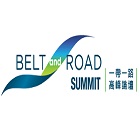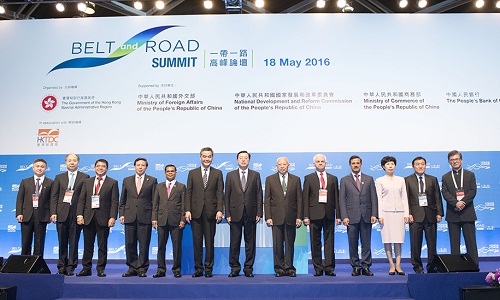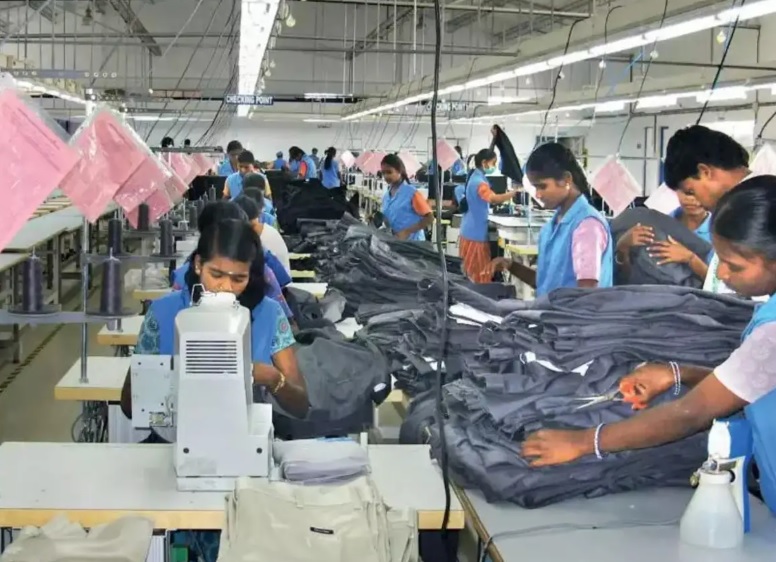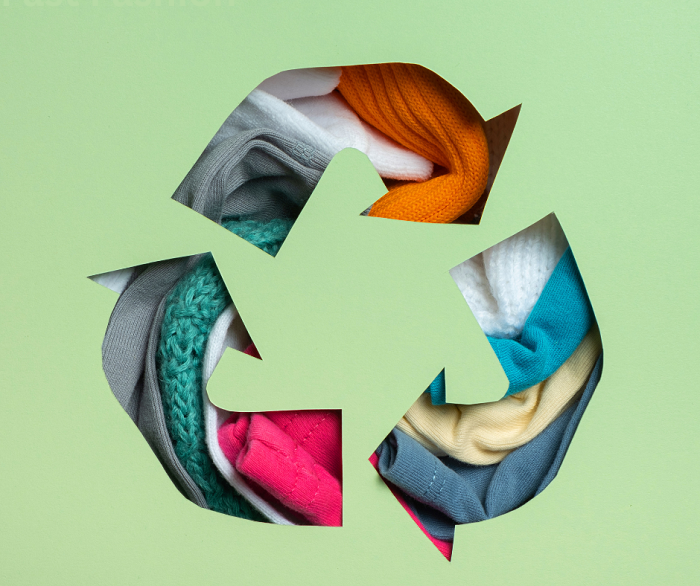FW
As per the data released recently by the International Trade Administration’s Office of Textiles and Apparel, or OTEXA, denim brands and retailers implemented a big shift in sourcing strategy in the first quarter of 2016. A denim import from China was 24.6 per cent of the total, down from 24.9 per cent a year ago, in the first three months of 2016. Imports from Mexico suffered an even bigger fall, dropping from 30 per cent of total US denim imports in the first quarter of 2015 to 26.7 per cent in 2016.
Meanwhile, Bangladesh and Pakistan gained 100 basis points of share, to become the number 3 and 4 suppliers of denim jeans to the US market. This is consistent with industry trends showing a shift in denim market share toward the fast fashion retailers that are a favorite of younger consumers. Total US import of denim jeans fell by 4.3 per cent to $674.6 million in the first quarter. Units declined 3.5 per cent to 85 million, resulting in a drop of 0.8 per cent in the average cost of a pair of imported jeans.
Incidentally, men’s and boy’s jeans suffered the biggest drop, with the dollar value of imports down 7. 8 per cent to $351.6 million. Women’s and girls’ jeans imports were virtually flat at $323 million in the quarter.
Accounting for about 82 per cent in total commodity export in the first nine months of 2015/16 fiscal year (from July ’15 to March ’16), woven and knitted apparel export value amounted to $20.4 billion in Bangladesh, up 9.7 per cent year on year. The major export destinations for apparels are US, EU, Japan and Canada.
Rapid development is seen in Bangladesh, especially the apparel industry, with the shift of China’s textile and apparel orders. In the first nine months of 2015/16 fiscal year, export value of woven and knitted apparels witnessed a yearly growth of 9.7 per cent.
Bangladesh mainly exports woven apparels to US, Canada and China, while for Germany, United Kingdom, Spain, France, Italy and Belgium, the exports of knitted apparels are larger than woven apparels.
Bangladesh’s largest export market of knitted apparels is Germany, with a proportion of 20 per cent, followed by United Kingdom and US. For woven apparels, the largest market is US, with a proportion of 29 per cent, next are Germany and United Kingdom. Those major export destinations have certain preferential policies for the exports of Bangladesh’s apparels.
Apparel Training & Design Centre (ATDC), India’s largest vocational training network for the apparel sector, organised a workshop on ‘Fabric and Garment Testing’ at its Gurgaon campus recently. Amit Saluja, Senior Laboratory Manager, TUV Rheinland was the industry expert who conducted the workshop where more than 50 students attended. The aim of the workshop was to upgrade the knowledge base of students in fabric and garment testing. This would propel a swift growth in their career by providing them a hand on training in fiber analysis, physical properties, chemical properties, fabric strength, colour fastness, and to enrich the skill levels of Industry Personnel.
The significance of this test is to check the compliance of the regulatory requirements and safety standards of the concerned country, check whether the approved fabric used in production is appropriate or not. This would help in avoiding return and recalls, and most importantly ensure brand protection.
The All Pakistan Textile Mills Association (APTMA) has rejected Pakistan Senate Committee on National Food Security and Research demand to immediately stop importing cotton lint from India. As Tariq Saud, Chairman APTMA says the observation of the committee that the country’s agriculture economy would be ruined if the import of 0.5 million bales of cotton from India was not stopped as there is sufficient stock of cotton lint available with the Trading Corporation of Pakistan is baseless. He said that TCP Officials has confirmed in the meeting held on April 28, 2016 under the Chairmanship of Secretary Commerce that only 75,900 bales of 2014-15 season balance stock available with TCP.
Saud urged the Senate Committee that instead of suggesting any ban on cotton imports it should take up the matter of crop failure and concentrate on ways to prevent such failures from occurring again. He said the local industry would prefer to use Pakistani cotton over any other imported growths provided sufficient cotton is made available for the industry to run at full capacity. At the moment, the requirement of the industry is 16 million bales whereas the local cotton production was less than 10 million bales. He asked the question that if cotton import will be banned who is going to fill the gap between 16 million bales requirement and 10 million bales availability?
Alok Industries which makes cotton and polyster yarn, apparel fabric, garments and home textiles plans to separate its operations into two or three units that can be individually sold to financial investors, as it struggles under the weight of debt. As of March 31, 2015, the textile maker had Rs 15,347 crores of debt, which, adjusting for non-fund based exposure, would come close to Rs 20,000 crores now.
The main lenders include State Bank of India and IDBI Bank. It is believed that Alok Industries’ creditors are currently in the process of appointing an external auditor to conduct a forensic audit of the company’s books.
Lenders to Alok Industries decided on a strategic debt restructuring (SDR) of the company in November 2015, the company said in a stock exchange notification. In January this year it said, lenders planned to acquire 65 per cent of the company by converting debt to equity under SDR. SDR, introduced by the Reserve Bank of India (RBI) in June 2015, allows banks to convert a part of a defaulting borrower’s debt into majority equity and assume operational control.
"Hong Kong recently hosted the inaugural Belt and Road Summit to explore business opportunities presented to the world by the Belt and Road Initiative. Held at the Hong Kong Convention and Exhibition Centre, more than 20 senior government ministers from countries located along the Belt and Road routes as well as business leaders from Hong Kong, the Chinese mainland, ASEAN and other regions shared their insights on a wide range of issues."

Hong Kong recently hosted the inaugural Belt and Road Summit to explore business opportunities presented to the world by the Belt and Road Initiative. Held at the Hong Kong Convention and Exhibition Centre, more than 20 senior government ministers from countries located along the Belt and Road routes as well as business leaders from Hong Kong, the Chinese mainland, ASEAN and other regions shared their insights on a wide range of issues. The high-level event welcomed more than 2,400 participants, including investors, project owners and services professionals.
The event was organised by the Hong Kong Special Administrative Region Government (HKSARG), supported by the People’s Republic of China’s Ministry of Foreign Affairs, National Development and Reform Commission and Ministry of Commerce, and the People’s Bank of China, in association with the Hong Kong Trade Development Council (HKTDC).

In his welcome remarks, HKTDC Chairman Vincent HS Lo said that the Hong Kong Trade Development Council has been promoting the city as an integrator that brings together governments, capital and expertise to maximize Belt and Road opportunities.
Policy coordination, sector cooperation and ASEAN development
There were three panel sessions. The first panel, chaired by Laura Cha, Chairman of Hong Kong’s Financial Services Development Council, analysed investment opportunities from policy makers’ perspective. The panellists shared their views on how governments can develop their own policies and work with other countries to facilitate cooperation. The speakers included HE Eng Sultan Saeed AlMansoori, Minister of Economy, the United Arab Emirates; HE Ong Ka Chuan, Second Minister of International Trade and Industry, Malaysia; Franky Sibarani, Chairman, Indonesia Investment Coordinating Board (BKPM); and the Hon Gregory So, Secretary for Commerce and Economic Development, HKSAR.
Addressing the topic, ‘Enhancing cross-sector connectivity among economies along the Belt and Road is a major goal of the Initiative,’ the second panel presented influential business leaders offering their insights into closer cooperation between different sectors within the Belt and Road framework. Putting forth their views were: Victor Fung, Group Chairman, Fung Group (Panel Chair); HE Sultan Ahmed Bin Sulayem, Group Chairman and Chief Executive Officer, DP World; Douglas Flint, Group Chairman, HSBC Holdings plc; Dr DJ Pandian, Vice President and Chief Investment Officer, Asian Infrastructure Investment Bank; Lin Jingzhen, Deputy Chief Executive, Bank of China (Hong Kong) Limited; and Professor the Hon KC Chan, Secretary for Financial Services and the Treasury, HKSAR.
The third panel examined the importance of closer business partnerships and the crucial role of ASEAN in the Belt and Road Initiative. The panel was chaired by Kevin Sneader, Chairman, Asia, McKinsey & Company and featured ASEAN business elites, including, Narong Chearavanont, Vice Chairman, Charoen Pokphand Group; Suryo Bambang Sulisto, Chairman, KADIN Indonesia Honorary Council and Founder, PT Satmarindo Group; Teresita Sy-Coson, Vice Chairperson, SM Investments Corporation; Tan Sri Dr Francis Yeoh Sock Ping, Managing Director, YTL Group; and Dr Jonathan Choi, Chairman, Sunwah Group.
Investment opportunities
Hon John Tsang, Financial Secretary of the HKSAR, delivered opening remarks during the keynote luncheon and Han Weiqiang, Chairman of the Supervisory Committee of China International Capital Corporation, introduced the keynote speaker Jin Qi, Chairman of the Silk Road Fund. The $40 billion Silk Road Fund was established to help finance the Belt and Road Initiative, mainly in infrastructure and resources, as well as projects related to industrial and financial cooperation. Jin said that Hong Kong can facilitate communications and connections among Belt and Road countries, and can provide an ideal platform for financing and asset management.
At the Dialogue on ‘The Way Forward,’ HKTDC Chairman Lo shared the stage with Wang Zhan, President of the Shanghai Academy of Social Sciences and Executive Vice President of Yangtze Council. The dialogue delved more deeply into the next steps for the Initiative and explored how businesses can plan strategically to prepare themselves for the Belt and Road opportunities ahead. During the Dialogue, Chen Dongsheng, President of China Entrepreneurs Forum announced the setting up of a Belt and Road fund in Hong Kong to capitalise on the opportunities.
Tangible steps forward The summit offered opportunities for effective networking and business matching through its Business Matching Workshops, exhibition and infrastructure display while a side-trip to some of the mainland’s Free Trade Zones. The workshops, under the themes: infrastructure, urbanisation and utilities, gathered investors, project owners and services professionals to build business partnerships through networking and business matching. An exhibition was also staged, with 27 Hong Kong services providers showcasing their expertise in banking and financial services, infrastructural development and professional services. At the Global Investment Zone, 10 countries introduced their investment projects to international investors.
In collaboration with the Association of Architectural Practices (AAP) and Association of Consulting Engineers of Hong Kong (ACEHK), the HKTDC mounted a signature display of around 145 infrastructure projects in Hong Kong, showcasing the city’s infrastructure and real estate-related services.
The event was organised by the Hong Kong Special Administrative Region Government (HKSARG), supported by the People’s Republic of China’s Ministry of Foreign Affairs, National Development and Reform Commission and Ministry of Commerce, and the People’s Bank of China, in association with HKTDC.
Wool cheques will be smaller this year to 2015, producers have been warned by the British Wool Marketing Board (BWMB). Wool values have been confirmed at between 61p/kg and £1.18p/kg depending on breed, with coarser wools suffering most.
According to the chairman of BWMB Ian Buchanan, it is a tough global wool market. Strong sterling for most of the selling season, coupled with a weak New Zealand dollar, had been one of the main reasons for lower returns, he said.
The BWMB’s forecast for 2016 shows a slight improvement for some breeds, based on sales in January to April this year, when values had stabilised, said a spokesman. The past six months had seen continued demand for the fine and medium wools as a result of Chinese interest. Meanwhile, clearance rates at BWMB auction sales over the past few months had been strong and there was still demand for quality British wools.
Cotton acreage in Punjab and Haryana has remained far less than the targeted area. The reason: farmers feared whitefly which destroyed much of the crop last year in both states. So they are looking at alternate crops like paddy, pulses, guar. Punjab has so far seen cotton sowing at 2.08 lakh hectares, less than half of the target of five lakh hectares. Haryana is a little better off with 65 per cent sowing so far against the target of 6.20 lakh hectares.
Another reason farmers could not achieve the sowing target is non-availability of canal water. In several areas of Punjab, about 80,000 hectares of area could not brought under cotton because of non-availability of irrigation water.
Last season, whitefly pest attack had caused widespread damage to Bt cotton varieties in Punjab and Haryana, which witnessed a dip of about 40 per cent in output. In Punjab, 1.36 lakh hectares out of a total of 4.50 lakh hectares of cotton acreage were damaged by whitefly attack while in Haryana out of 5.83 lakh hectares, 3.06 lakh hectares were in the grip of pest attacks.
Both Punjab and Haryana encouraged farmers this year to grow indigenous cotton as the domestic variety has resistance to whitefly attack.
Industry leader in supply chain and logistics, Safexpress has entered the 20th year of its business from this financial year. To commemorate this occasion, it has launched Safexpress 20th Year Carnival for its ‘Paid and To Pay’ customers. This is the first-ever offer of its kind to be launched in the supply chain and logistics industry in India.
Speaking about the Safexpress 20th Year Carnival Offer Rubal Jain, MD, Safexpress said that they will be rewarding their Paid and To Pay customers with lots of exciting gifts every month. These gifts will range from Maruti Suzuki Alto Cars to Gold Coins. Jain added that the 20th Year Carnival gifts will be handed over every month to our customers from across the country.
The key to success for the company’s customers under this offer is to increase their number of waybills. This will automatically lead to an increase in the probability of winning under the offer. This is a great opportunity for customers to not only avail of the company’s best-in-class services, but also get rewarded for the same.
Alliance for Bangladesh Worker Safety has appointed former US ambassador James F Moriarty as country director. Moriarty was the executive director of Alliance, prior to this assignment. He will now lead strategic oversight and outreach activities with key stakeholders in Bangladesh’s government, garment industry, and non governmental and non profit organizations.
Alliance for Bangladesh Worker Safety is a platform of 28 North American retailers and brands. With safety inspections completed in all Alliance factories, 1.2 million workers trained in fire safety at least once, and 50 per cent of factory repairs now complete, there has been significant progress in Alliance activities in Bangladesh.
As country director, Moriarty will spend more time in Bangladesh working with the Alliance’s partners to support Bangladesh’s efforts to improve garment factories after the Alliance comes to a close in 2018. Moriarty comes aboard as managing director Rabin Mesbah transitions to lead the building and fire safety division of Elevate, the management firm responsible for designing, managing and executing all Alliance remediation and training efforts in Bangladesh.
Moriarty looks forward to having even more active engagement with key stakeholders to help Alliance achieve its shared vision of a safer readymade garment industry for Bangladeshi workers.












